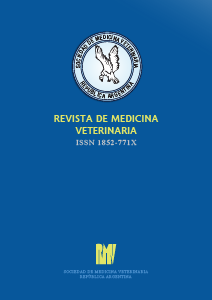A disease which can kill cats, both domestic and wild, has been discovered for the first time in the US.
A variant of the rustrela virus -- related to the wider-known rubella virus which causes a skin rash in humans -- called RusV was discovered in a female mountain lion in Douglas County, Colorado last year, according to a study published in the journal, Emerging Infectious Diseases, this month.
The big cat was observed in May 2023 with lesions on her skin and signs of severe muscle weakness in her hind legs. She was also reluctant to get up and had decreased mobility.
Wildlife officers suspected that the mountain lion was suffering from a disease, but were unsure what wase causing her behavior. To end her suffering and prevent the destruction of brain tissue, the big cat was tranquilized and shot in the chest.
Then, the study authors started work to investigate the potential cause of the unknown disease.
The scientists said the study of tissue samples, the cat’s history, and genetic sequencing suggested that she was suffering from the rustrela virus variant, RusV. Also known as Rubivirus strelense, RusV is the cause of what is known as “staggering disease.”
Staggering disease is a usually fatal neurologic syndrome in cats, the study noted, and RusV was only recently identified as its cause. Animals show sign of lesions and the same limb impairment.
It’s been documented in domestic cats in Europe since the 1970s, and has also been found in rodents. A similar syndrome was reported in Alabama cats 45 years ago, but the cause was obscure.
To demonstrate a link between the lesions and RusV, researchers used previously-developed hybridization methods for the virus. Hybridization is the process in which two complementary, single-stranded DNA -- the hereditary material in humans and nearly all organisms -- or RNA (ribonucleic acid) molecules bond together. RNA is a nucleic acid in all living cells that has similarities to DNA.
Hybridization allows for the identification of specific genes and an analysis of levels of the molecule messenger RNA (mRNA) in cells. MRNA molecules carry the genetic information that is needed to produce proteins, which serve many key functions in the body like repairing cells and helping to protect the immune system.
The authors said these methods showed RusV RNA was in all regions of the big cat’s brain and nearly all levels of the spinal cord.
“We found particularly abundant or large, dot-like signals in the granule cell layer of the hippocampus, and in Purkinje cells of the cerebellum, similar to findings from staggering disease cases in cats from Europe,” said researchers at the Friedrich-Loeffler-Institute in Germany.
The novel RusV virus discovered in Colorado was compared with other strains. It revealed that the Colorado samples belonged to known genetic sequences in Europe.
Scientists don’t yet know how widespread the virus is in domestic cats or wild ones in the US.
The American Veterinary Medical Association said symptoms to watch for include a staggering gait, the inability to retract claws, extreme sensitivity to touch, tremors, and seizures. The illness usually lasts for a few days to a few weeks, but can also linger for more than a year.
It generally results in a decline that require the animal to be euthanized.
“We’re not worried if this is an isolated case,” Dr. Karen Fox, a wildlife pathologist at Colorado State University and study author, told National Geographic. “But traditionally, when we find diseases, it means you’re the tip of an iceberg, and there’s a bunch more you’ve missed over time.”
Fuente: Independent.co.uk
